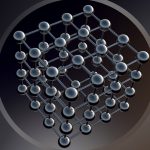Why Magnetism in Certain Materials is Different in Atomically Thin Layers and Their Bulk Forms
A group of researchers led by MIT Department of Physics Professor Pablo Jarillo-Herrero have built on two years of prior research to present us with new findings. Previous research led by researchers at the University of Washington showed that rotating layers of hexagonally-structured graphene at a particular “magic angle” could change the material’s electronic properties from an insulating state to a superconducting state. This time, Jarillo-Herro’s group went deep into 2-D magnets to find if magnetism in certain materials is different in atomically thin layers than in their bulk forms.
2nd Times a Charm
The new study, which was recently published in Nature Physics, revealed that when looking at different ultra-thin materials that also feature a honeycomb-shaped atomic structure — in this case, chromium trichloride (CrCl3) — you could alter the material’s magnetic properties by shifting the stacking order of layers.
The researchers (Jarillo-Herrero, Dahlia R. Klein, David MacNeill, Qian Song, Daniel T. Larson, and Shiang Fang) attribute this change in energy to a slightly different arrangement of the atoms in 2-D chromium chloride. “The chromium atoms form a honeycomb structure in each layer, so it’s basically stacking the honeycombs in different ways,” says Klein, thus showing that the magnetic and stacking orders are very strongly linked between thin layers and their bulk forms.
What They Did This Time
MacNeill and Klein grew the chromium chloride samples, built and tested nanoelectronic devices, and analyzed their results. They then measured the stacking order of 2-D layers through the use of Raman spectroscopy and developed a mathematical model to explain the energy involved in changing the magnetic direction. “Dahlia and David have been able to use Raman spectroscopy to learn details about the crystal structure of their devices that would be very difficult to measure otherwise,” Larson explains.
By using tape, researchers peeled away 2-D layers of chromium trichloride — similar to how graphene is taken from graphite. Layers are very weakly coupled in these materials, known as van der Waals magnets, which is what makes it easy to remove a layer from the 3-D crystal with adhesive tape. “Just like with graphene, the bonds within the layers are very strong, but there are only very weak interactions between adjacent layers, so you can isolate a few-layer samples using tape,” Klein says.
Finally, using electron tunneling, they studied these 2-D layers and found that the magnetism was different from 3-D crystals. The difference was due to stacking arrangements between atoms in adjacent layers. “What we’re seeing is that it’s 10 times harder to align the layers in the thin limit compared to the bulk, which we measure using electron tunneling in a magnetic field,” says MIT physics graduate student research fellow and one of the paper’s lead authors, Dahlia R. Klein.
They also found that when chromium trichloride is cooled from room temperature to cryogenic temperatures, 3-D crystals of the material undergo a structural transition that the 2-D crystals do not. This difference accounts for the higher energy required. Researchers found in this 2-D form that this alignment needs a magnetic force 10 times stronger than in the 3-D crystal. Physicists call the energy required to align the magnetic direction of opposing layers the interlayer exchange interaction. “Another way to think of it is that the interlayer exchange interaction is how much the adjacent layers want to be anti-aligned,” fellow lead author and MIT postdoc David MacNeill suggests.
What This Means
Their work shows how the magnetic properties of 2-D magnets can differ dramatically from their 3-D counterparts. “This means that we have now a new generation of highly tunable magnetic materials, with important implications for both new fundamental physics experiments and potential applications in spintronics and quantum information technologies,” says senior author Pablo Jarillo-Herrero.
This research really highlights the importance of stacking order on understanding how these van der Waals magnets behave in the thin limit,” Klein says. MacNeill adds. “The question of why the 2-D crystals have different magnetic properties had been puzzling us for a long time. We were very excited to finally understand why this is happening.”
Stay Up to Date on Magnetic Discoveries Through Apex
For more break-through magnetic discoveries, browse through our magnet in the news section.

